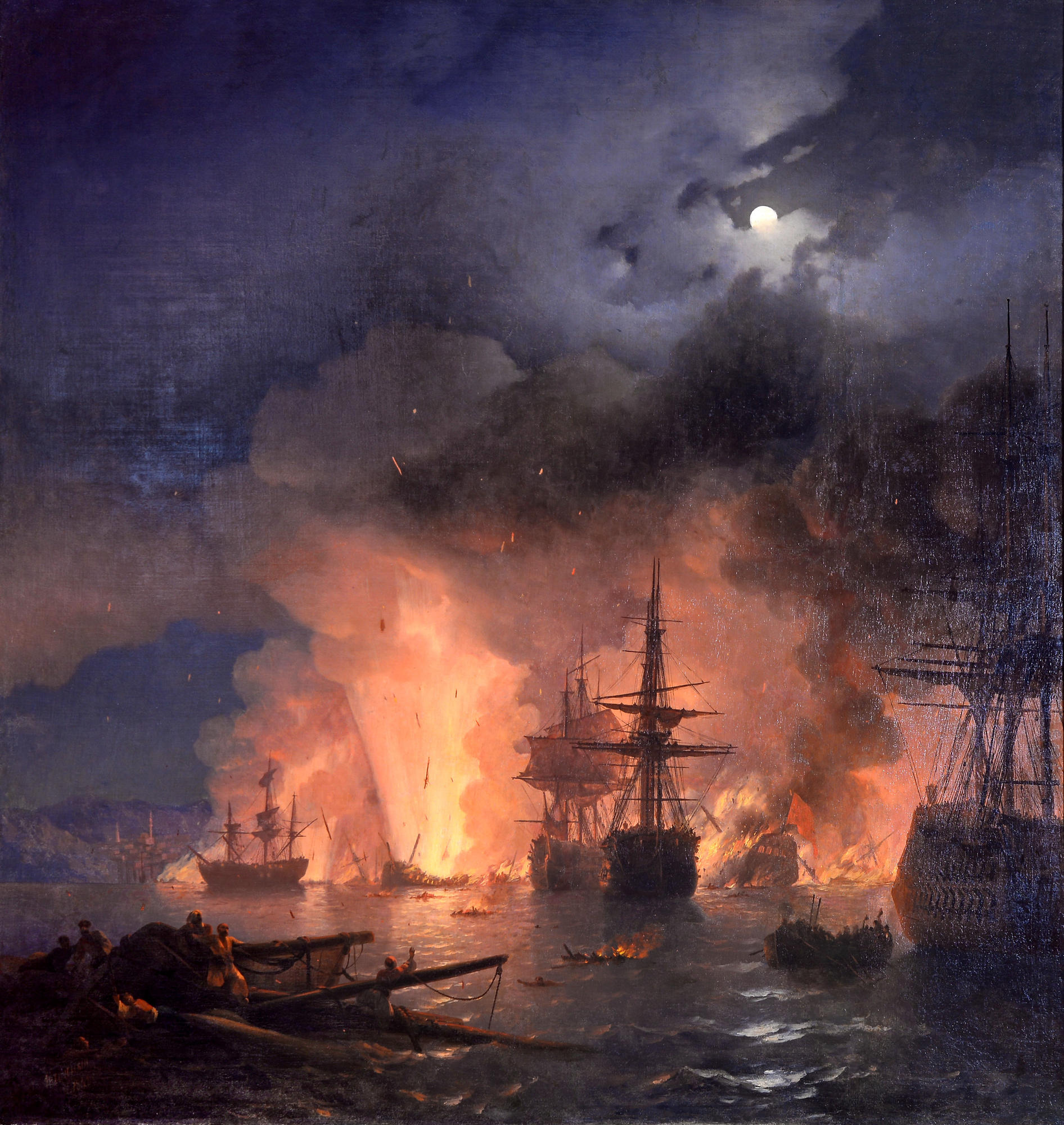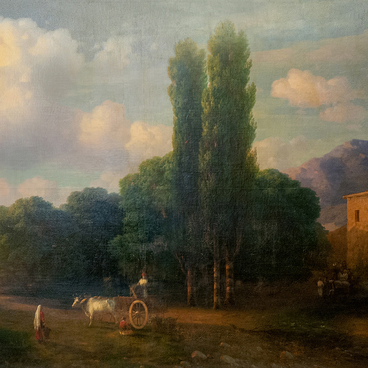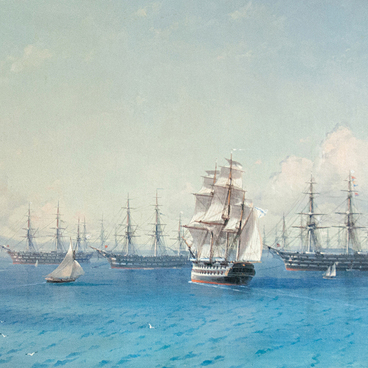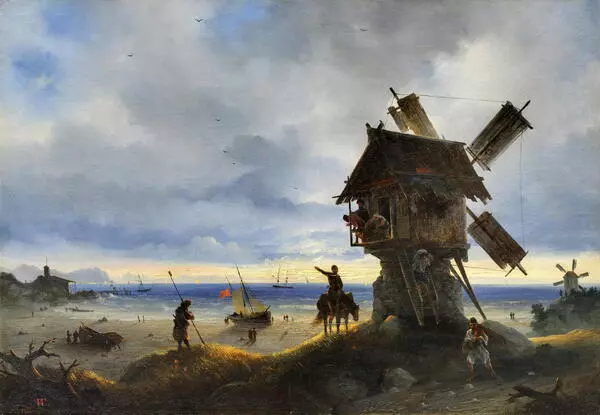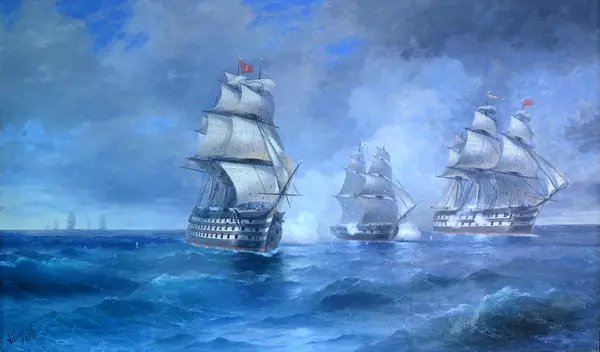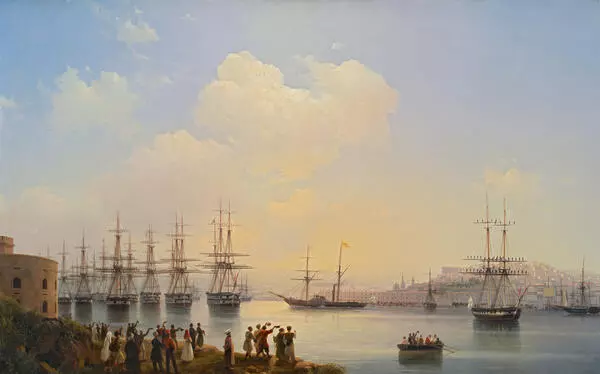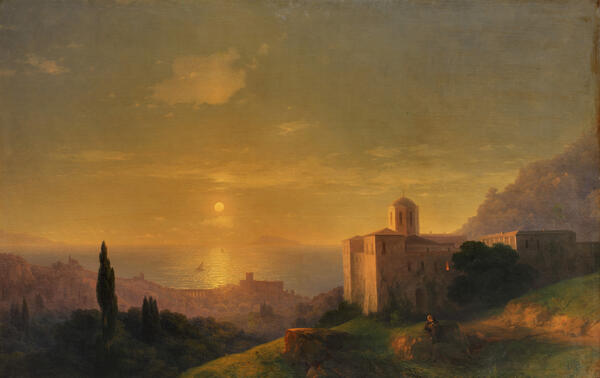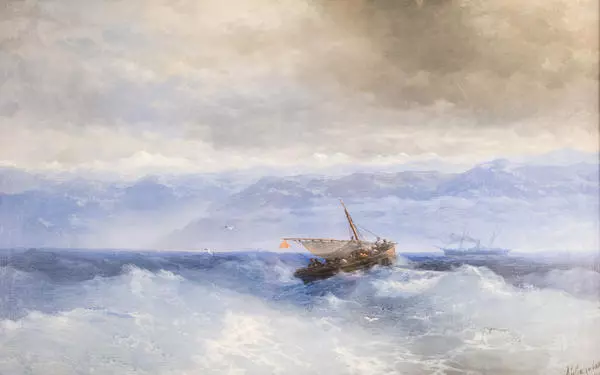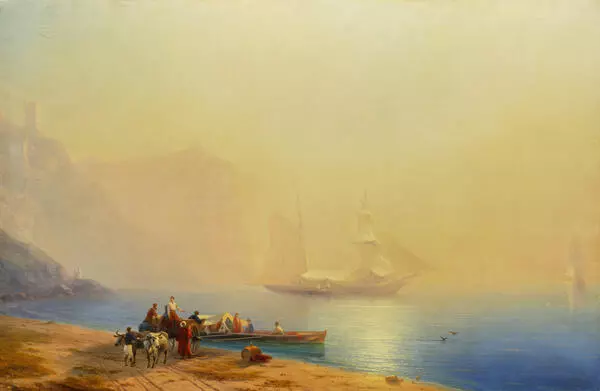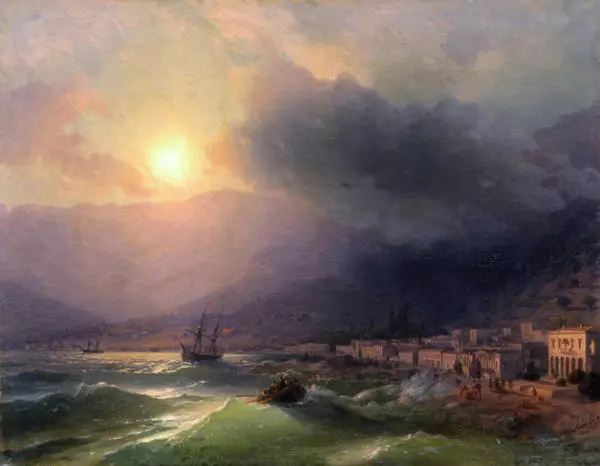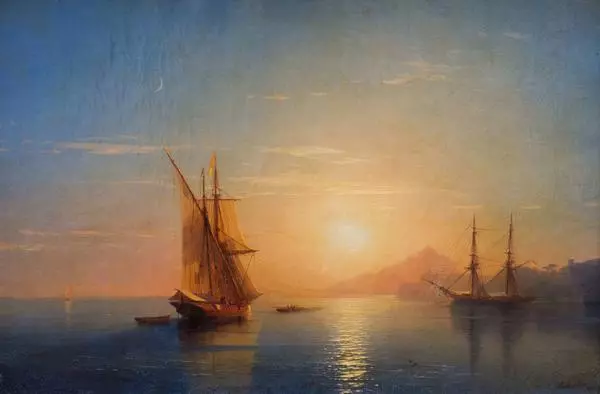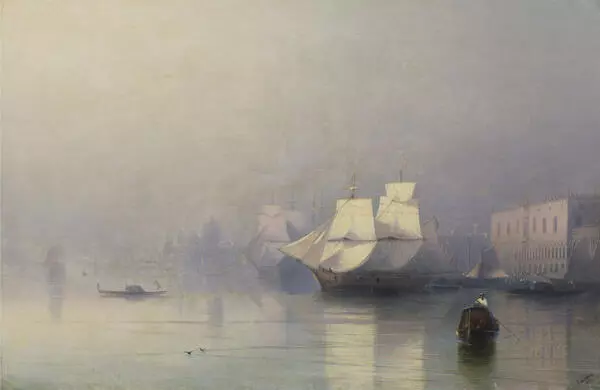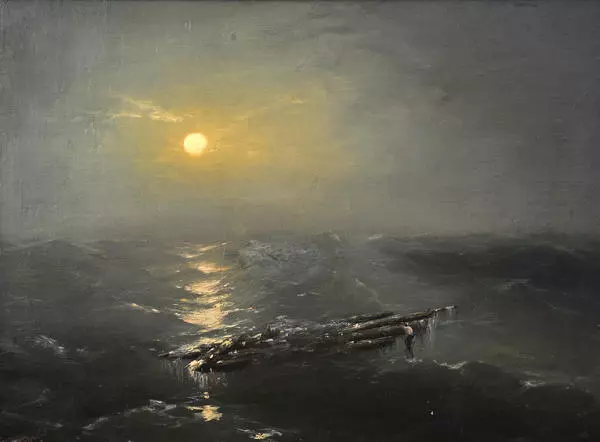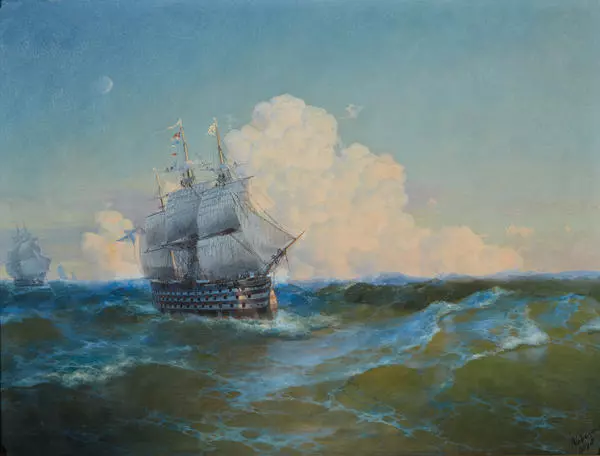In 1844, Aivazovsky was assigned to the Navy General Staff as an artist. When he was young, the artist willingly participated in training cruises of the ships of the Baltic and Black Sea fleets. Fleet commanders were sympathetic to his works and did everything to help him to learn the basics of seamanship. ‘When I painted naval battle views, the Admiralty provided all sorts of aids to me – drawings of ships, sketches of vessel rigging and armaments. For me to see the flight of cannon balls ricocheting on the water surface, a few service charge cannon shots were made in my presence in Kronstadt’, — the artist reminisced.
During his long life, Aivazovsky painted numerous outstanding events from the history of the Russian Navy. One of them was the Battle of Cesme that took place in 1770 and was the central event of the Russia-Turkey war (1768—1774). The forces were unequal— 26 Russian ships fought against 63 Turkish ones. A whole day of the Russians’ undaunted attempts to crush the Turkish fleet culminated in a victory which allowed the Russians to block the Dardanelles Strait and played an important role in making a peace treaty.
Aivazovsky masterfully rendered the great pathos of the event. The Battle of Cesme is one of the brightest battle paintings of his brush. From the distance, the canvas looks like the depiction of huge fireworks. The solemnity of the picture is largely derived from its flamboyant colour gamut. Aivazovsky depicted the decisive moment of the battle deep in the Harbour of Cesme - the explosion of the Turkish ship which had been hiding there in the hope that the Russians would not dare engage in a battle during the night. The bright flame illuminates the houses of the coastal town on the hillsides. The debris of the destroyed deck is suspended in the air. The Turkish fleet was totally destroyed in that battle.
Aivazovsky created two versions of the picture. One is now at the Feodosia Picture Gallery the other is kept in St. Petersburg, at the Navy Institute. The artist often sent his battle paintings to the Naval Academy for cadets to cherish the memory of their predecessors’ heroic deeds.
During his long life, Aivazovsky painted numerous outstanding events from the history of the Russian Navy. One of them was the Battle of Cesme that took place in 1770 and was the central event of the Russia-Turkey war (1768—1774). The forces were unequal— 26 Russian ships fought against 63 Turkish ones. A whole day of the Russians’ undaunted attempts to crush the Turkish fleet culminated in a victory which allowed the Russians to block the Dardanelles Strait and played an important role in making a peace treaty.
Aivazovsky masterfully rendered the great pathos of the event. The Battle of Cesme is one of the brightest battle paintings of his brush. From the distance, the canvas looks like the depiction of huge fireworks. The solemnity of the picture is largely derived from its flamboyant colour gamut. Aivazovsky depicted the decisive moment of the battle deep in the Harbour of Cesme - the explosion of the Turkish ship which had been hiding there in the hope that the Russians would not dare engage in a battle during the night. The bright flame illuminates the houses of the coastal town on the hillsides. The debris of the destroyed deck is suspended in the air. The Turkish fleet was totally destroyed in that battle.
Aivazovsky created two versions of the picture. One is now at the Feodosia Picture Gallery the other is kept in St. Petersburg, at the Navy Institute. The artist often sent his battle paintings to the Naval Academy for cadets to cherish the memory of their predecessors’ heroic deeds.
